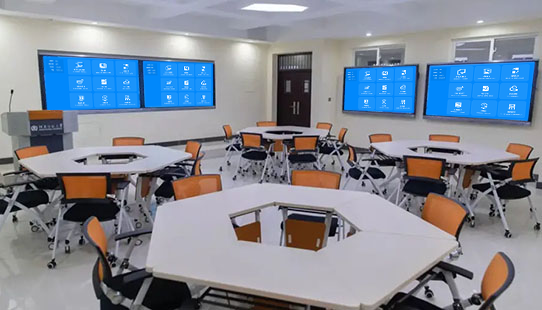Investing in Multi-Screen Collaboration: Why It’s a Critical Step for Enterprises to Reduce Costs, Boost Efficiency, and Achieve Digital Transformation
Any corporate investment requires measuring its return. Deploying a multi-screen collaboration system may seem like a hardware and software expense at first glance, but the comprehensive benefits it delivers far exceed its cost. It is not just a tool to improve efficiency, but a critical, bridging step in an enterprise’s digital transformation journey.
I. Saving Time Costs: Quantifying “Wasted” Meeting Time
Time is an enterprise’s most valuable resource. For a 30-minute meeting, if 5 minutes are wasted on connecting cables and debugging devices, this waste affects all participants. Assuming an average of 6 attendees per meeting, the total wasted time amounts to 30 person-minutes. Over time, this figure becomes staggering.
After deploying wireless screen mirroring and built-in video conferencing ROOMS, meetings can start instantly—with seamless mobile screen mirroring. This reduces the unproductive time per meeting to less than 1 minute. The saved time can be allocated to more creative work or in-depth business discussions, and the cumulative value of this time far surpasses the investment in the devices.
II. Reducing Communication Costs: Enhancing Decision Quality and Execution
Inefficient communication leads to misunderstandings, rework, and poor decisions—making it the largest hidden cost for enterprises. Multi-screen collaboration systems directly lower communication costs by providing richer interactive tools:
- Visual Communication: Drawing and writing on whiteboards, and real-time mobile screen mirroring to show on-site scenarios, ensure more accurate information transmission and avoid “I thought” misunderstandings.
- Remote Synchronization: Built-in video conferencing ROOMS make off-site colleagues feel as if they are in the same room, reducing decision biases and poor execution caused by information asymmetry and low engagement.
- Traceable Conclusions: Whiteboard content from meetings can be saved via QR code, and discussion processes are clear—ensuring decisions are implemented and responsibilities are assigned to specific individuals.
III. Optimizing Space Costs: Multi-Purpose Rooms to Improve Space Efficiency
A conference room equipped with a powerful multi-screen collaboration system can be easily transformed into:
- A standard conference room
- A remote video conference room
- A training classroom (with live streaming and recording via RTSP streaming integration)
- A temporary exhibition hall
- A command center
This means enterprises can meet more diverse business needs with fewer physical spaces, indirectly reducing office rental costs and improving space efficiency (revenue per unit area).
IV. Preserving Knowledge Assets: “Solidifying” the Value of Meetings
One of the biggest wastes for enterprises is the loss of experience. Multi-screen collaboration systems—especially those with RTSP streaming recording integration—can fully record valuable content such as meeting discussions, expert training, and project reviews.
These video materials form an enterprise’s precious digital knowledge assets, which can be used for new employee training, experience transfer, and process audits. The long-term value they generate is immeasurable: they allow the enterprise’s wisdom to be preserved and reused, rather than being lost due to staff turnover.
Investing in multi-screen collaboration, wireless screen mirroring, and built-in video conferencing ROOMS may seem like purchasing a set of hardware and software, but it is essentially investing in infrastructure that enhances organizational intelligence. By saving explicit time costs, reducing hidden communication costs, optimizing space utilization, and preserving organizational wisdom, it brings sustained, multi-dimensional returns to enterprises. On the journey of digital transformation, it is by no means an optional addition, but a critical, connecting step to consolidate the foundation of collaboration.
